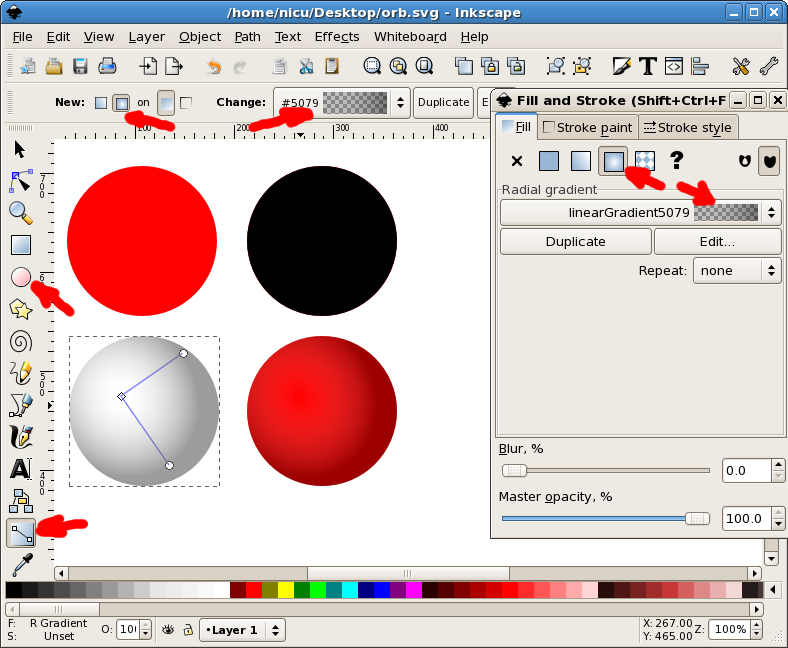
If we changed it so the line between Nodes 1 and 2 was a straight line then it would go under the red shape along border C, but wouldn't go all the way to borders A or B. Nodes 1 and 2 are shared with the red shape, and the line between them is "border C" - the one they share. I've put the outlines back on so it's easier to see what's happening. To do this we select the green shape using the Node Selector tool (second tool down on the toolbar, or just double click the shape with the regular Selector tool). Now we select one of the rectangles and the circle, then use the "Intersection" function (Ctrl+* or the option under the Path drop-down menu) to create an object that consists only of the overlap, as shown on the right. This also means that it's best work in pixels - Inkscape can display measurements in a number of different ways, but pixels is what you're viewing it using, and what you'll be displaying it using, so whenever Inkscape gives you the option to use different measurement styles (as shown here) it's best to choose "px"). This is useful when you want to move something out of the way, but want to move it back to the exact same position as before. If you press Ctrl+Shift+F the Fill and Stroke Dialog should appear on the right - you can use the Fill tab to set the fill colour.įirst we copy the rectangle, then paste it in place (Ctrl+Alt+V or the option under the Edit drop-down menu, as I said before) - I've moved the lower rectangle down and to the left to show the three overlapping shapes (side note: selecting an object, shape, or path and then clicking the arrow keys will move that object exactly 2 pixels in that direction, and pressing shift and an arrow key will move it exactly 20 pixels in that direction. If that still doesn't help, PM me and I'll respond with a more coherent and complete explanation in the morning.Įdit: Oh, or you could check out some of the Inkscape tutorials linked to in the Illustration Tutorials and Advice Superthread, which is stickied in this board.Īh, in Inkscape you can select paths and shapes and set their fill colour. They're under the Help menu, and should cover all the tools you'll need to make a map in Inkscape.

If that doesn't help, try going through Inkscape's in-built tutorials. I have a feeling that's a bit of a complicated explanation that I'll have to elaborate on later, but it's rather late here so I don't want to get stuck making a mini-tutorial for an hour.

There are a number of ways to do this, but one way is to draw a shape over the outline you've already done so the overlap between the new shape and the outline covers the entire area that you want filled in a certain colour, then copy and then paste in place (Ctrl+Alt+V or "Paste in place" in the Edit drop-down menu) the outline, select the outline copy and the shape and use the Intersection Boolean Function (Ctrl+* or "Intersection" from the Path drop-down menu) to create a shape consisting of just the overlap. This won't work if you're trying to fill in the space between two unrelated paths, though, so you may have to create new paths for each coloured area.


 0 kommentar(er)
0 kommentar(er)
